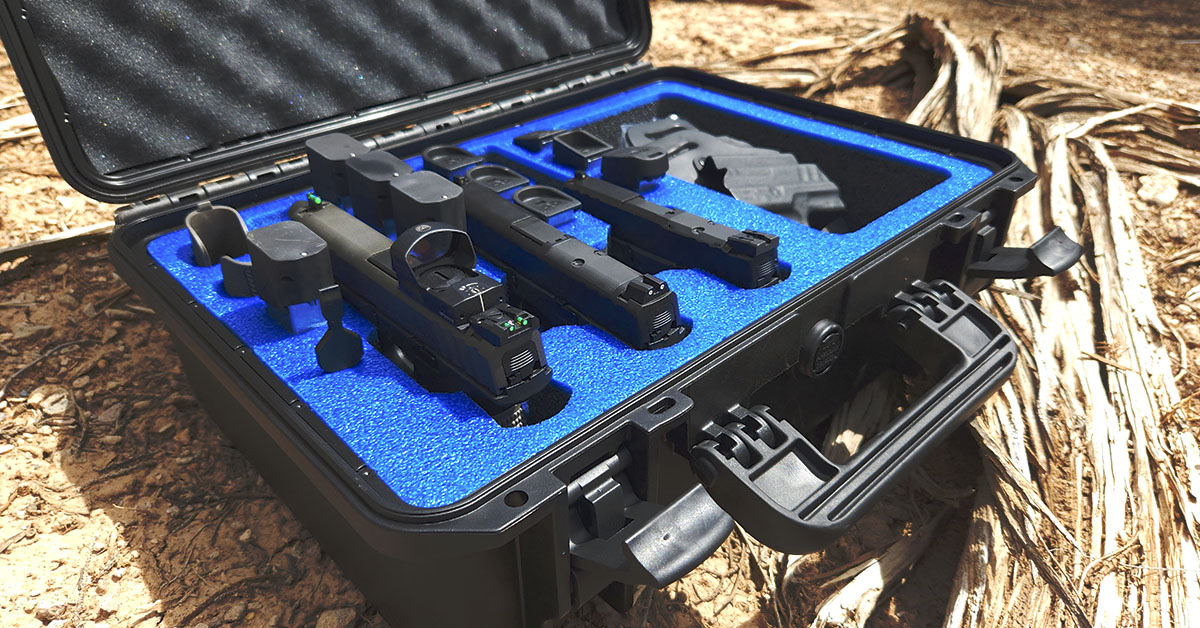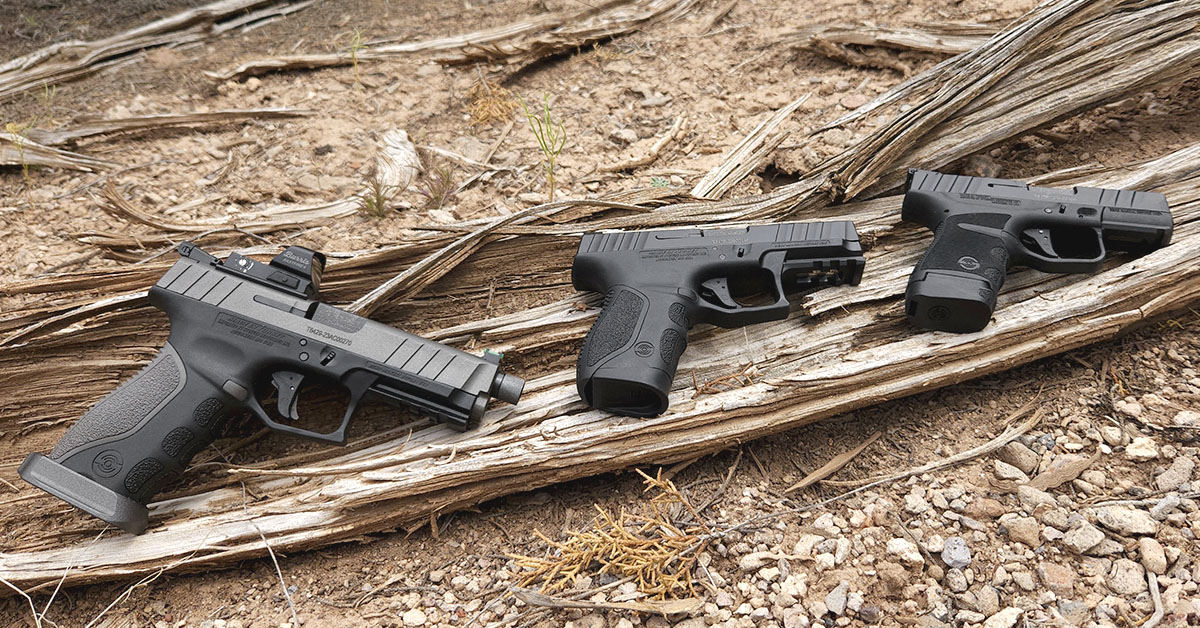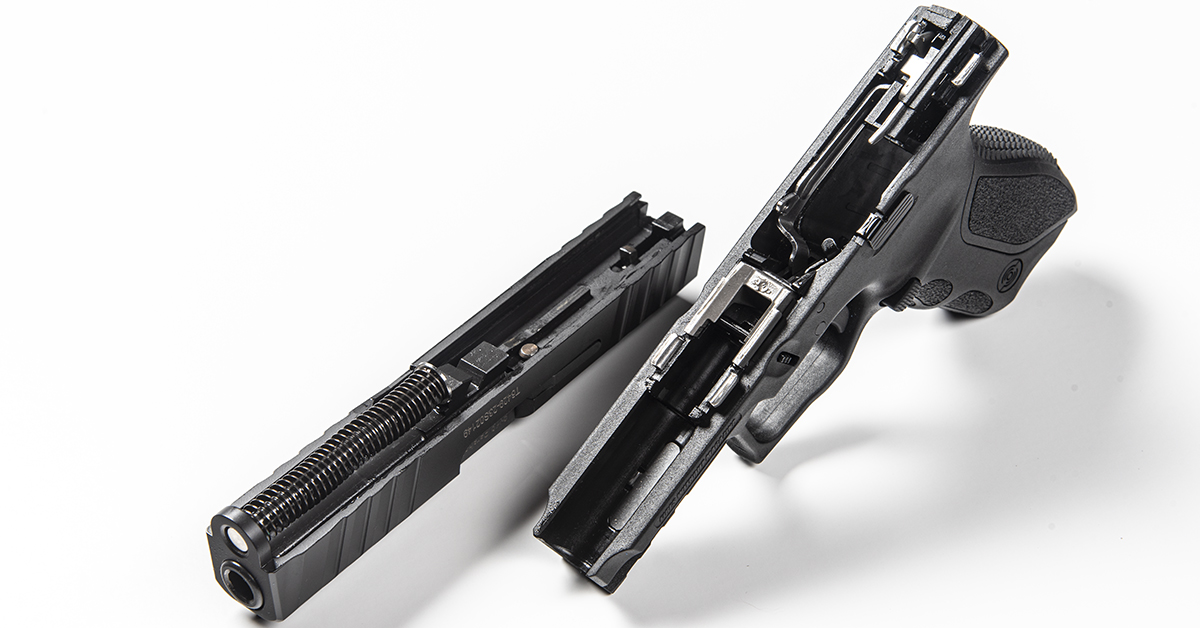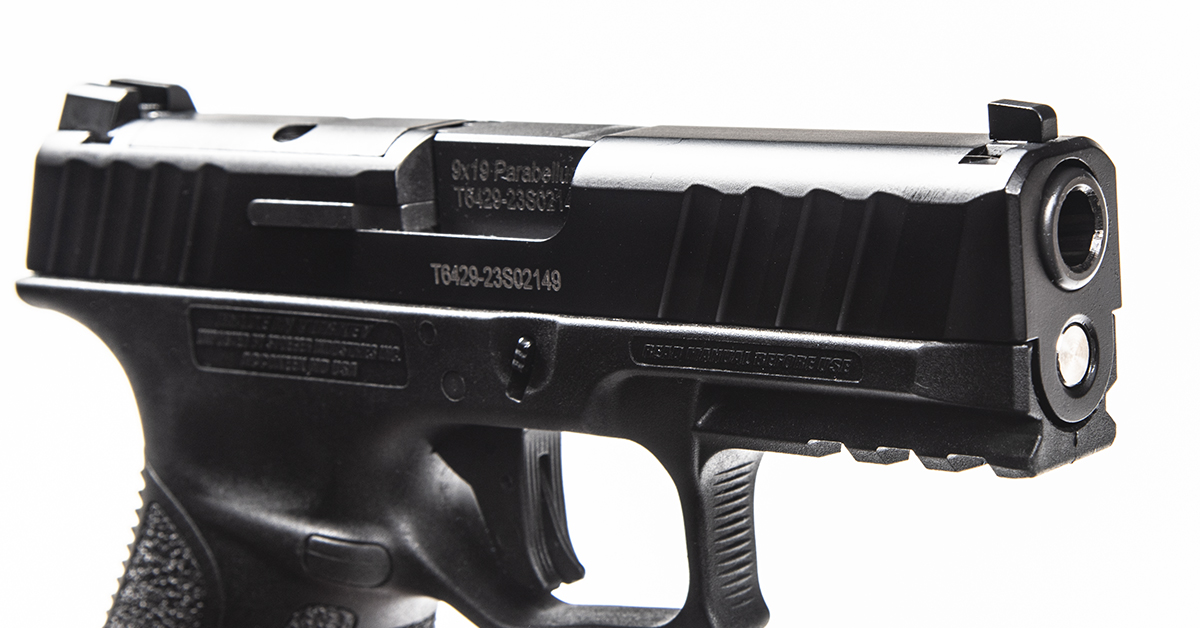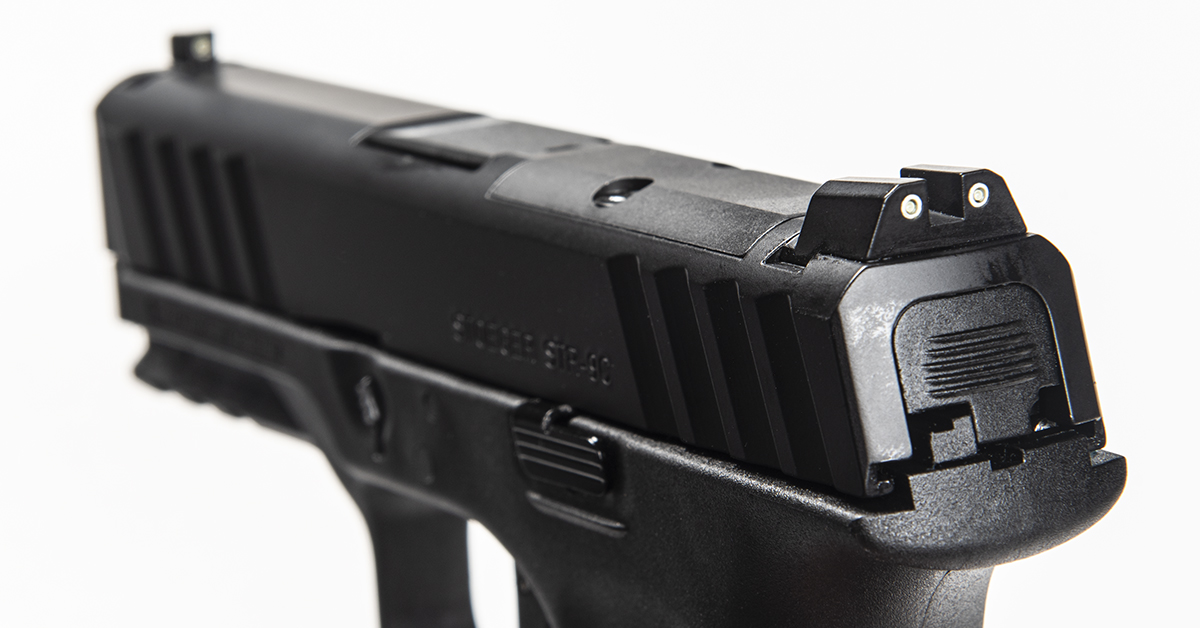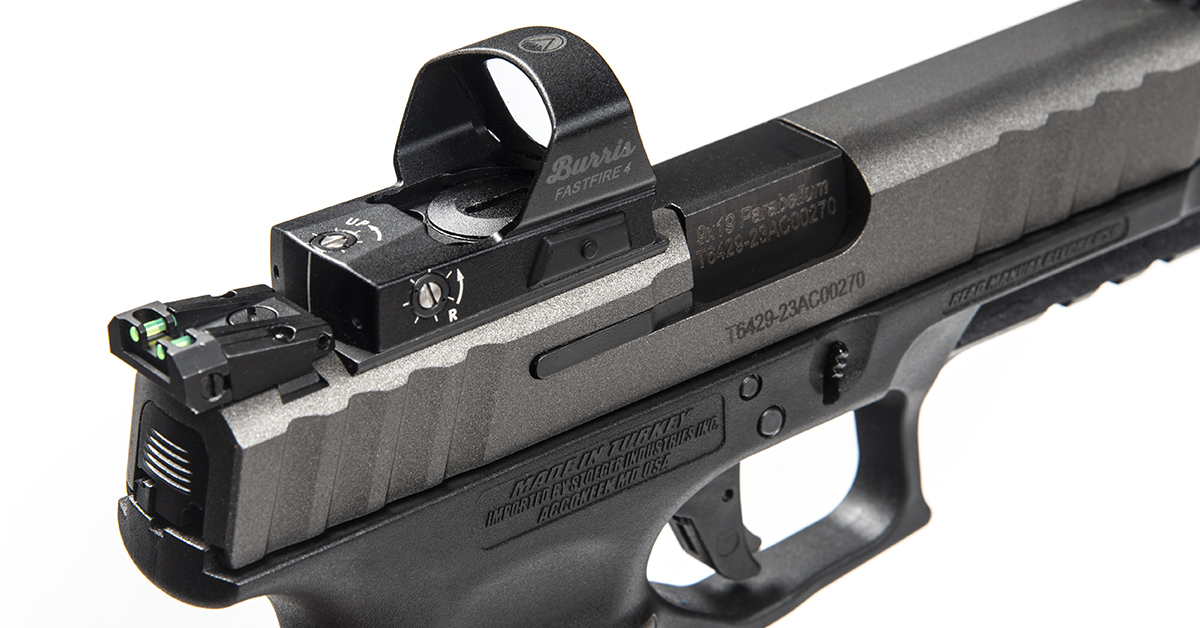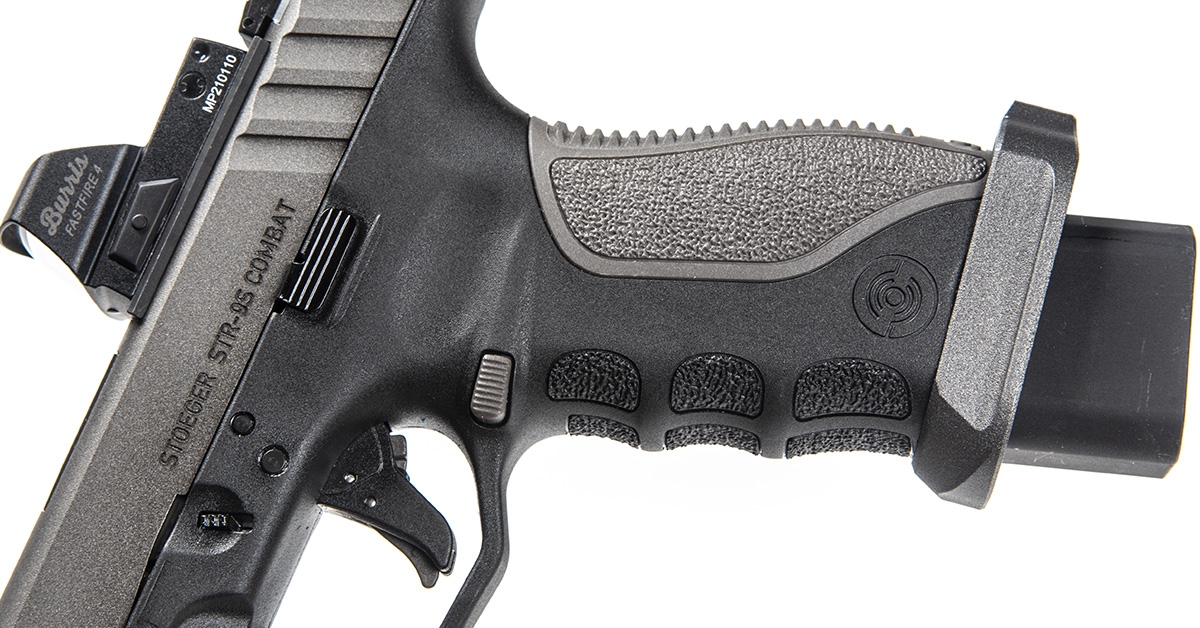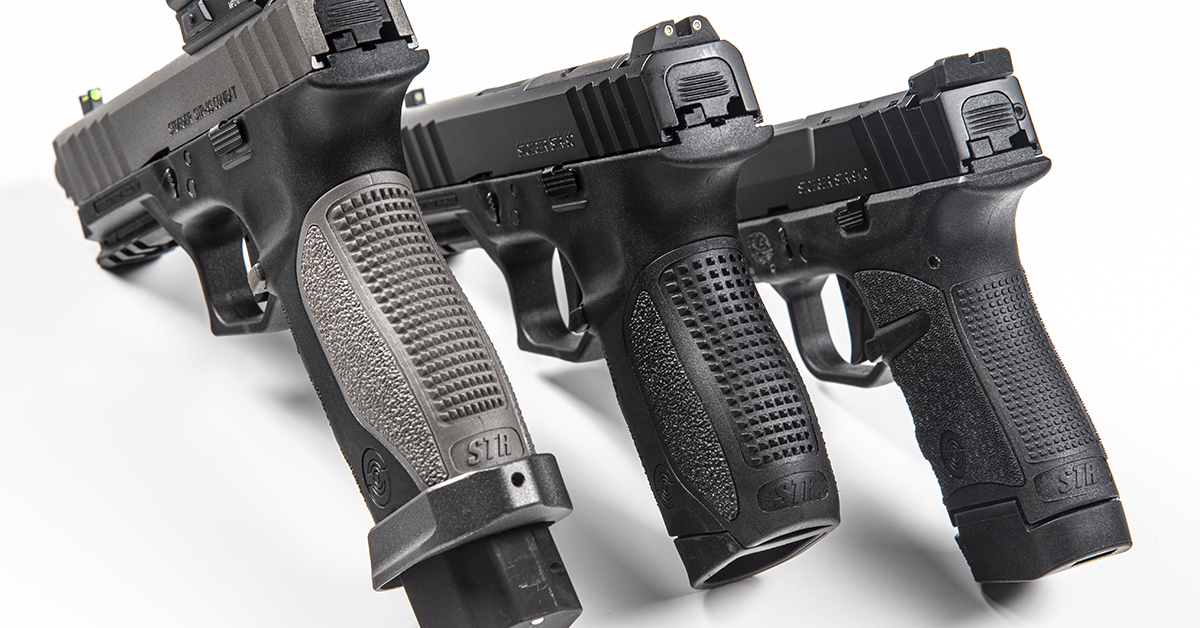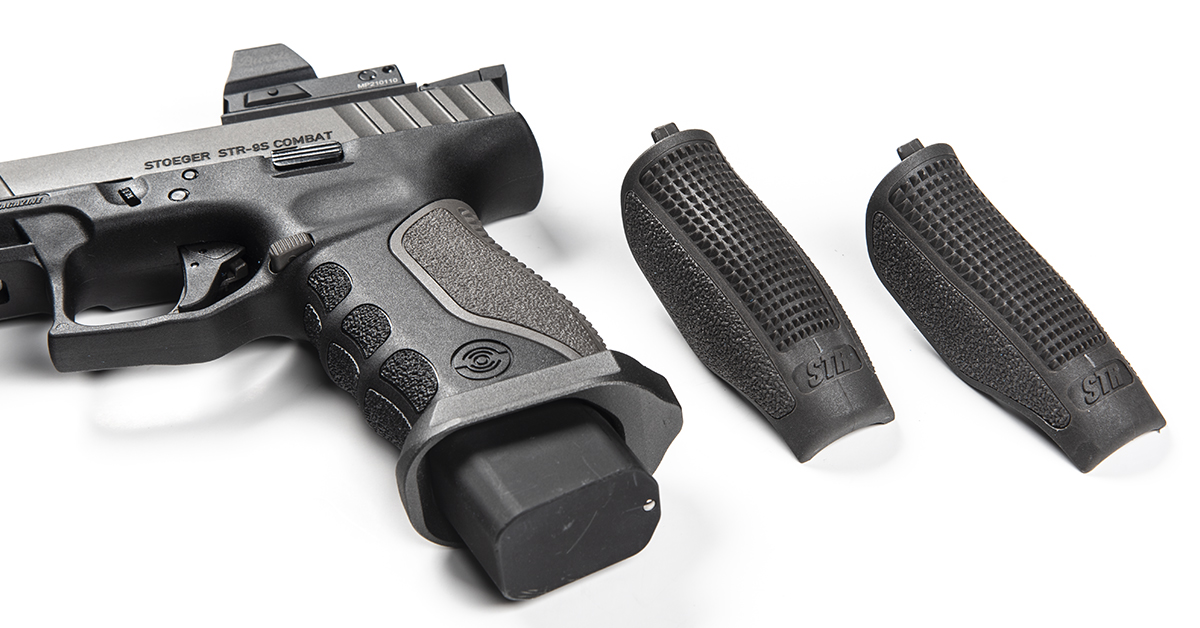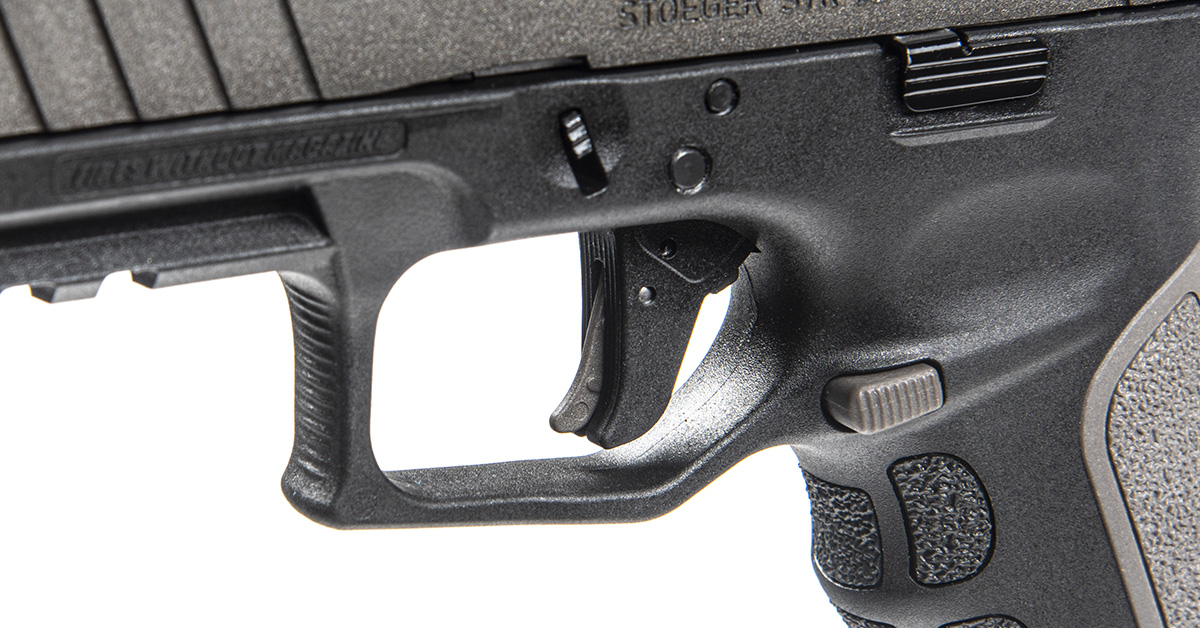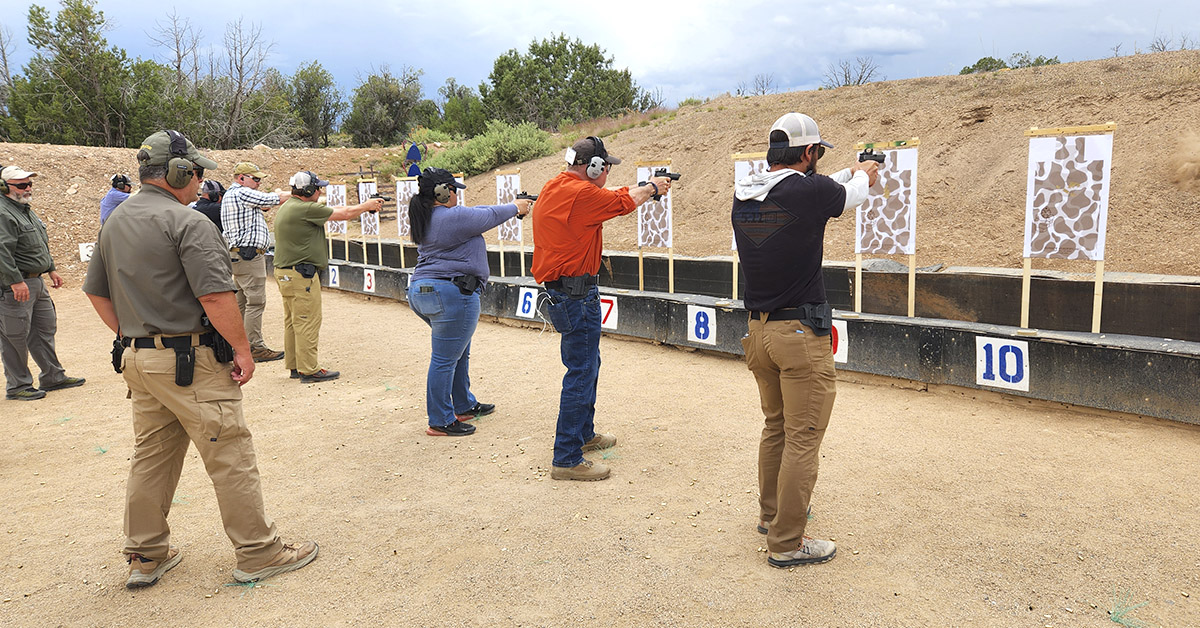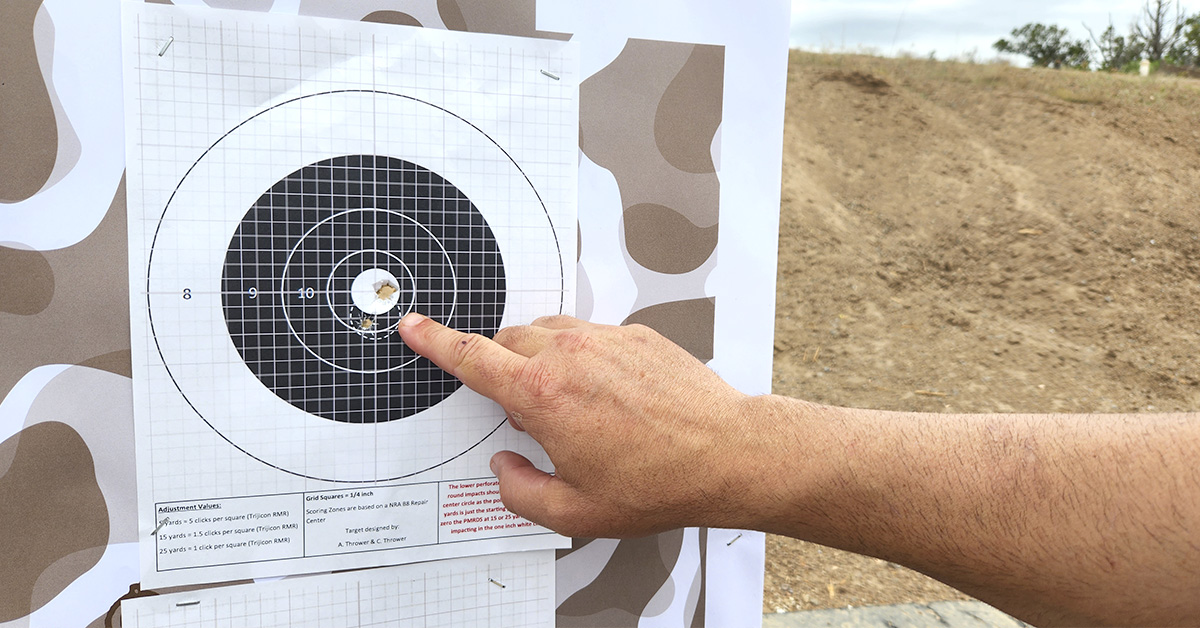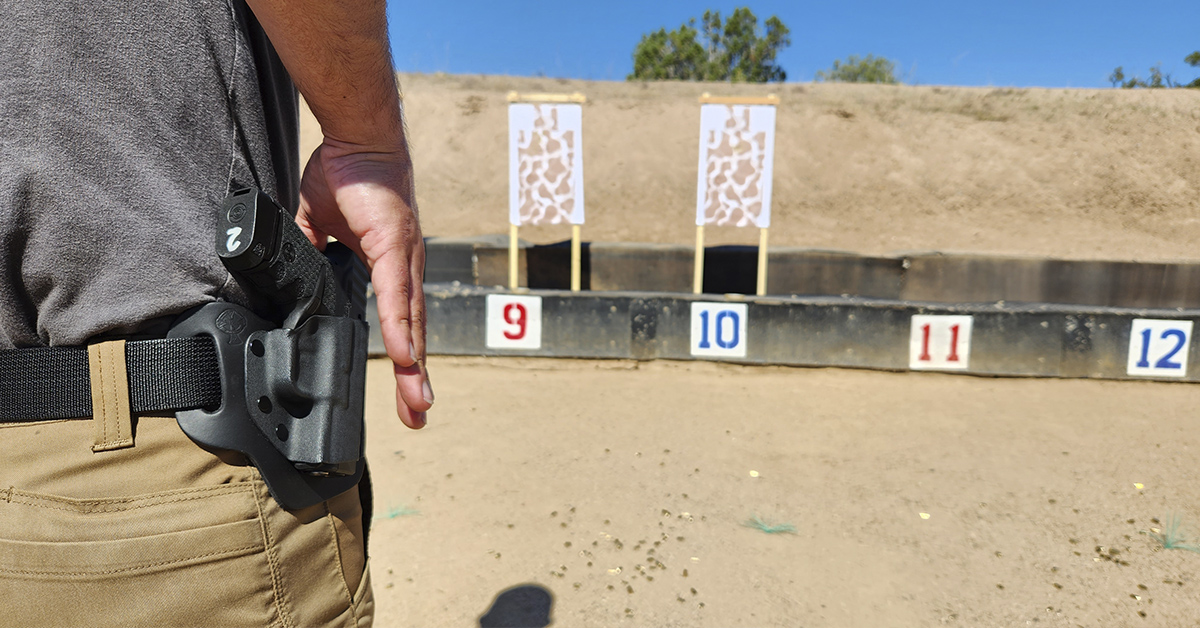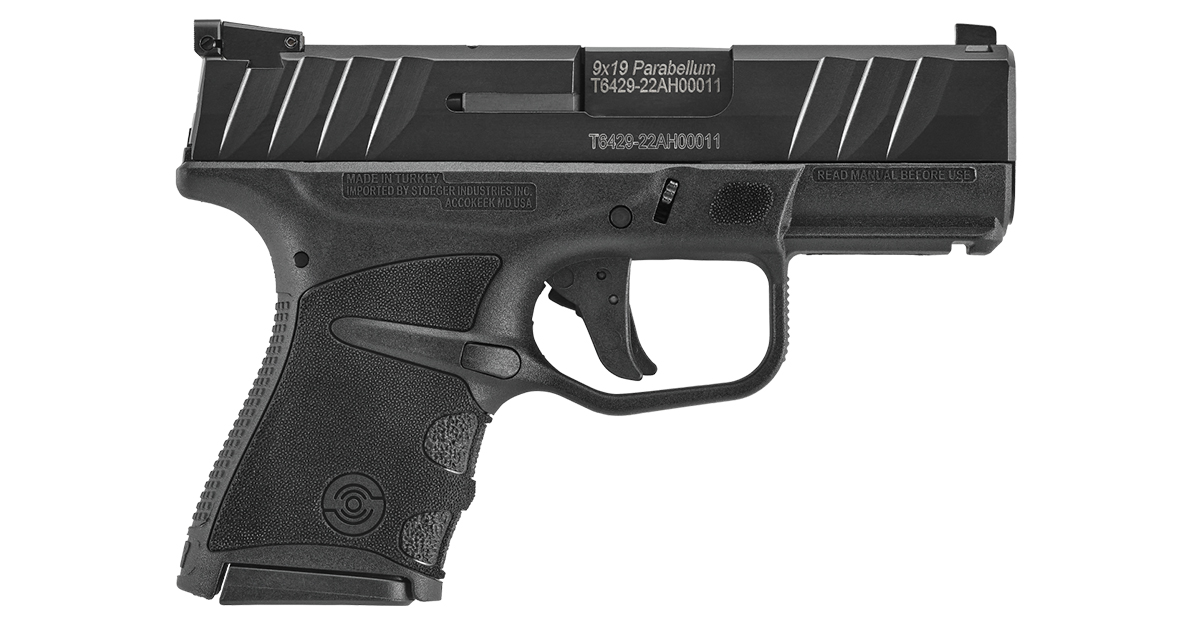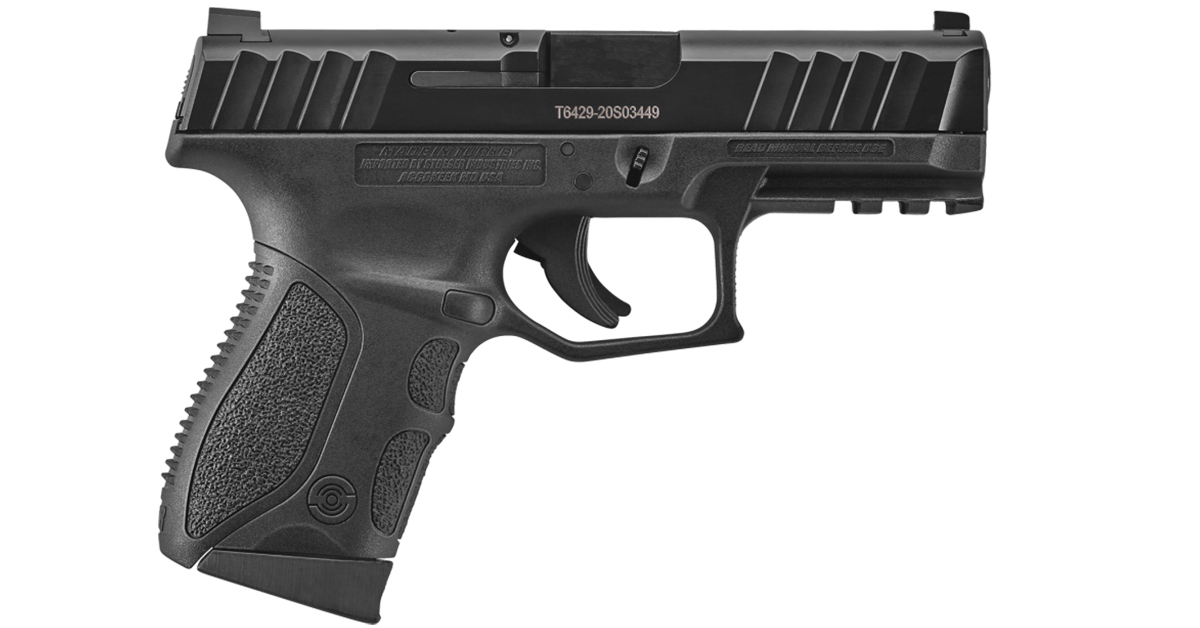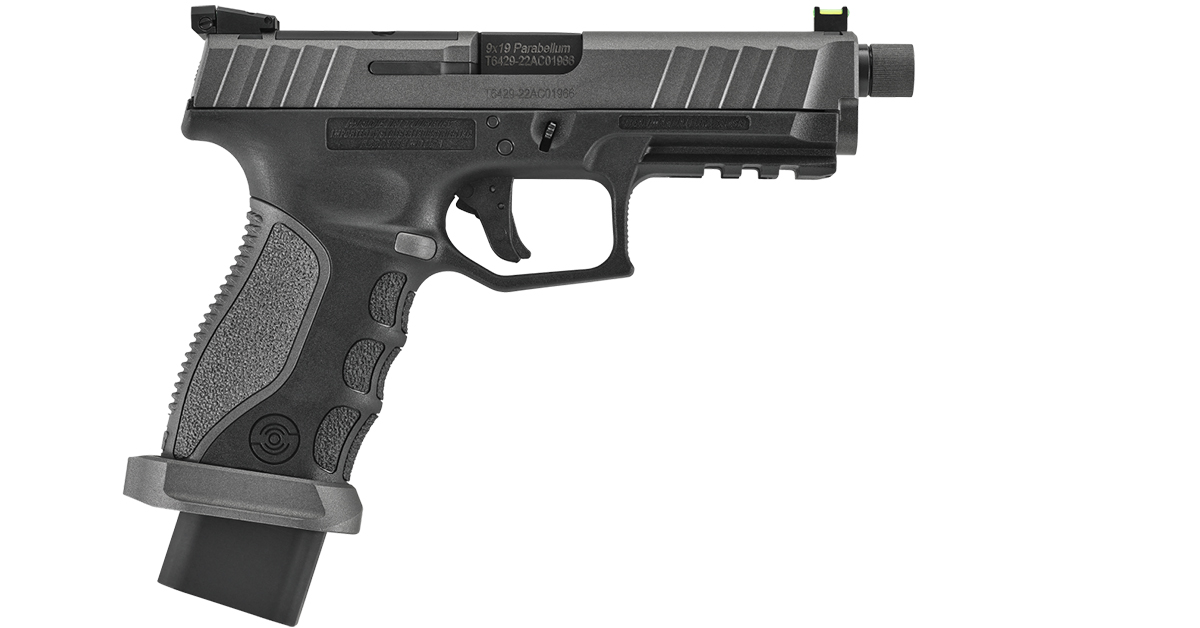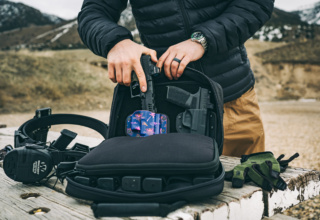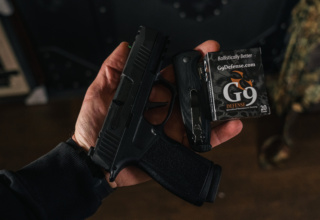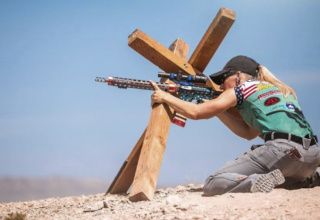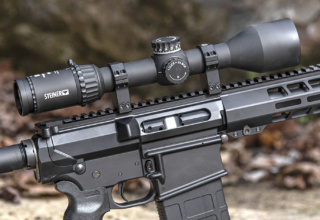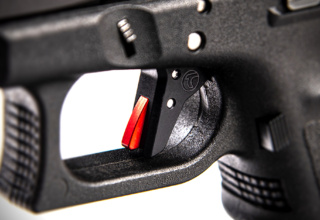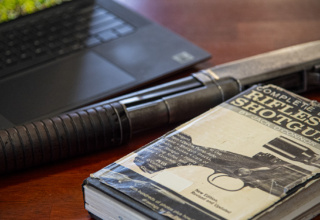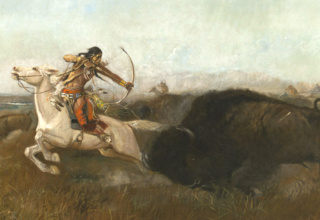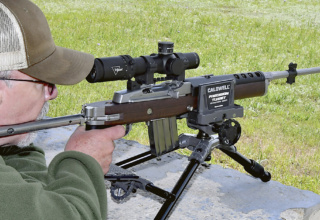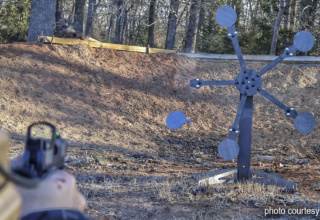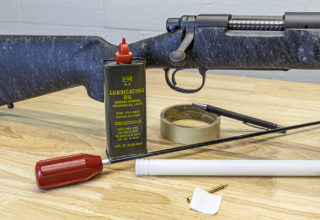18 shooters, 54 guns, and 3 days of high-volume shooting with ZERO malfunctions. Stoeger’s fresh 9mm semi-autos deliver reliability and accuracy that far exceed their workingman price point.
by Rob Reaser
After a week-long sojourn to the vaunted Gunsite Academy in Paulden, Arizona — home to the nation’s top civilian firearms training facility — I was filling out a Form 4473 at my cousin’s pawn shop to pick up the three Stoeger pistols I had used at the event. His buddy JD was manning the counter, unboxing the guns while I made sure to check the correct boxes on the newly revised fed form (don’t get me started on that one!). As I worked through the form, wondering what business it was of the ATF (or anyone else, for that matter) whether I “reside in city limits” or not, I heard JD say off to my left, “Stoeger pistols?!?!”
He had just opened the hard case containing the three STR-9 variants I had shot the week before.
JD is one of those young gun guys who seems to be familiar with just about every new product on the scene. He’ll sometimes ask me, “Have you seen the [fill in the blank]?” To which I’ll often reply, “Nope.”
I envy guys who can retain such vast amounts of info. My short-term memory cache automatically purges in about five seconds.
But JD’s rhetorical “Stoeger pistols?!?!?” question was telling. Here is a gun enthusiast with his finger firmly placed on the pulse of what’s going on in the industry and he was unaware that Stoeger produced any handguns, let alone a robust series of striker-fired models.
And that perfectly underscored why Stoeger decided to host a pile of gun writers for a deep dive into the company’s STR-9 lineup of defensive pistols. The first STR-9 rolled out in 2019, and in the years since the portfolio has expanded to include everything from a micro-compact to a full-size combat model, yet public awareness of the line has been, shall we say, minimal.
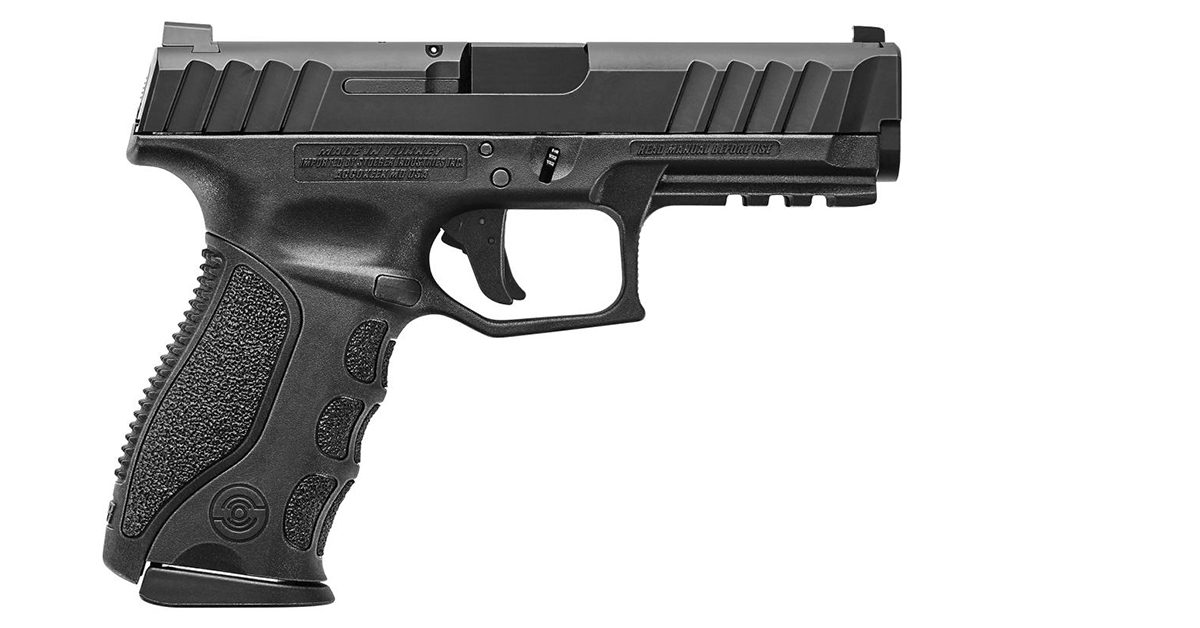
For most consumers and dealers alike, Stoeger is a name associated with mid-priced shotguns…and the company makes a lot of them. The STR-9 initiative, though, represents Stoeger’s move into the already saturated polymer-frame, striker-fired pistol realm. But aside from a handful of early reviews, the STR-9 slipped into the marketplace somewhat under the radar and with little fanfare. That, in itself, is rather surprising given that Stoeger has a reputable standing in the shotgun world and the brand is a member of the Benelli USA family of companies. In other words, the folks at Stoeger had no reason to be so conservative with the STR-9 rollout. Yet, as Keith Heinlein, Stoeger Product Manager and the driving force behind the development of the STR-9 program, explained, “We wanted to get it right.” That meant a slow and steady R&D process that looked at every aspect of the gun with the proverbial magnifying glass. Keith and his team wanted to be sure the final package not only performed on par with its leading class competitors but did so at a price point well below what consumers would expect from the gun’s performance capabilities.
In short, Stoeger intended the STR-9 to be a unique competitor in the defensive handgun space, not an “also-ran.” From my three-day immersion into the Stoeger brand, I have to say, “Mission accomplished.”
The stage for this mass gun evaluation was a three-day training session at Gunsite Academy. Overseen by Gunsite instructors and range masters Mario Marchman, Erick Gelhaus, and Paul Garcia, the three-day curriculum established to evaluate our cross-sampling of STR-9 pistols pulled exercises from Gunsite’s comprehensive pistol classes, including everything from the basics (draw, presentation, sight picture, reloading, et cetera) to interactive steel work, barricade shooting, and, most revealing to me, a run through the shoot house.
The STR-9s on the roster for this get-acquainted session included, from left to right, the STR-9S Combat Plus, the STR-9C Compact, and the STR-9MC Micro Compact. Between these models, Stoeger also offers the STR-9F Full Size, STR-9 standard, and the STR-9SC Sub Compact.
The Lineup
We will be taking a deeper dive into each of these three models over the next few months, but for now, we want to give you the big picture overview of these proven handguns and our initial impressions.
As for mechanical function and operation, the STR-9 series follows the GLOCK mold. Except for minor differences that most folks will never notice, the STR-9 has the same fundamental trigger assembly, locking block rail, and slide assembly design as the GLOCK pattern. Disassembly and assembly are also the same. Where the STR-9 sets its own course is in the frame and slide design.
The slide boasts pronounced serrations front and back to ensure a solid purchase when pulling it back to charge or when conducting a press check. All edges are either rounded or beveled to minimize snags and deliver smooth holster ingress/egress.
Both the front and rear sights utilize dovetail fitment for the standard Quick-Read three-dot configuration or the up-level tritium night sights. Don’t look for aftermarket replacements if you want to upgrade; however, Stoeger does offer a small selection of its tritium sights if you have purchased a model with standard iron sights.
Red dot fans can rest easy, as the STR-9 series is ready to roll. All models are available with or without an optic cut, except for the Combat model, which comes standard with an optic-ready slide and mounting plates to accommodate Trijicon RMR-, Eotech-, Docter-, Insight-, Burris-, Vortex-, Leupold Delta Point-, and C-More-pattern optics.
Where the STR-9 pistols shine is in the ergonomics department. While it is somewhat difficult for reviewers to parse out the feel and handling of a handgun because this is so subjective to the shooter, I can say that all three of the STR-9s I’ve shot (from the micro up to the full-size combat model) have a natural, body-conforming feel about them that required no “getting used to” time. In this, the Stoeger designers did a commendable job.
All guns seat high in the web of your hand for a comfortable low-bore axis that makes open-sight shooting fast and intuitive. The finger grooves along the front strap aren’t subtle yet neither are they prominent. Stoeger claims a 1.5 mm depth here. If that seems like intentional precision, it is. During development of the STR-9, and with feedback from professional shooters, the designers determined this to be an ideal finger groove depth for a comfortable yet retentive grip. I certainly can’t argue with that.
Grip texture across the three models tested, though, varied. The micro compact, for example, has mild, square texturing along the backstrap that is in no way aggressive while the front strap/finger grooves have two different texture patterns that are both stickier than the backstrap. This is a smart combination. The mild backstrap means you won’t chew up your palm with the abbreviated grip, yet the more aggressive front strap texture offers plenty of grip and control. The Combat model, in contrast, has mild texturing on the front strap and sides and a modestly aggressive pyramid texture on the backstrap. You could shoot it all day (and I did) with no problems. The compact model, though, has mild texturing on the front and sides but a super-aggressive pyramid-textured backstrap — aggressive to the point that my palm was feeling a bit tender after a couple hours of shooting. It keeps the gun locked tight in your hand, for sure, but if you plan on long range sessions, wear gloves or take those sharp points down with some sandpaper.
Many of the guns in the STR-9 line come with interchangeable grips so you can customize the fit. When you first wrap your hand around a pistol grip, it may feel just fine. Shoot it, though, and experiment with different grip sizes, and you might discover that the grip that at first feels the best may not be the one you do your best shooting with.
The STR-9 triggers feature the expected blade safety and a flat face with serrations. They are comfortable, with slightly chamfered edges and a subtle hook profile at the bottom of the shoe that helps keep your finger in place. They have a longer pull than my G43 and the break isn’t as crisp, yet the reset is significantly shorter. For a defensive gun, I feel the shorter reset of the STR-9 wins the day.
Magazine capacities for the STR-9s range from 10 to 20 rounds, with 13-, 15-, and 17-round mags available depending on the model. Stoeger went with their own magazine design for the entire STR-9 line, so GLOCK or other brand mags will not work.
On the Firing Line
Day One of our Stoeger familiarization program centered on the STR-9S Combat. The guns were fitted with the Burris Fastfire 4 red dot and carried in CrossBreed’s proven DropSlide holster. Instructor Gelhaus, an expert on red dot use for defensive and competitive shooting, provided much needed guidance for those of us who are still getting used to this ever-more-popular sighting system.
While I have yet to become comfortable with a red dot on my EDC guns, a full day behind the optic-laden STR-9S Combat and the pointed guidance from Gelhaus certainly put me on the right path. The gun felt just right in my hands — well-balanced and easy to shoot.
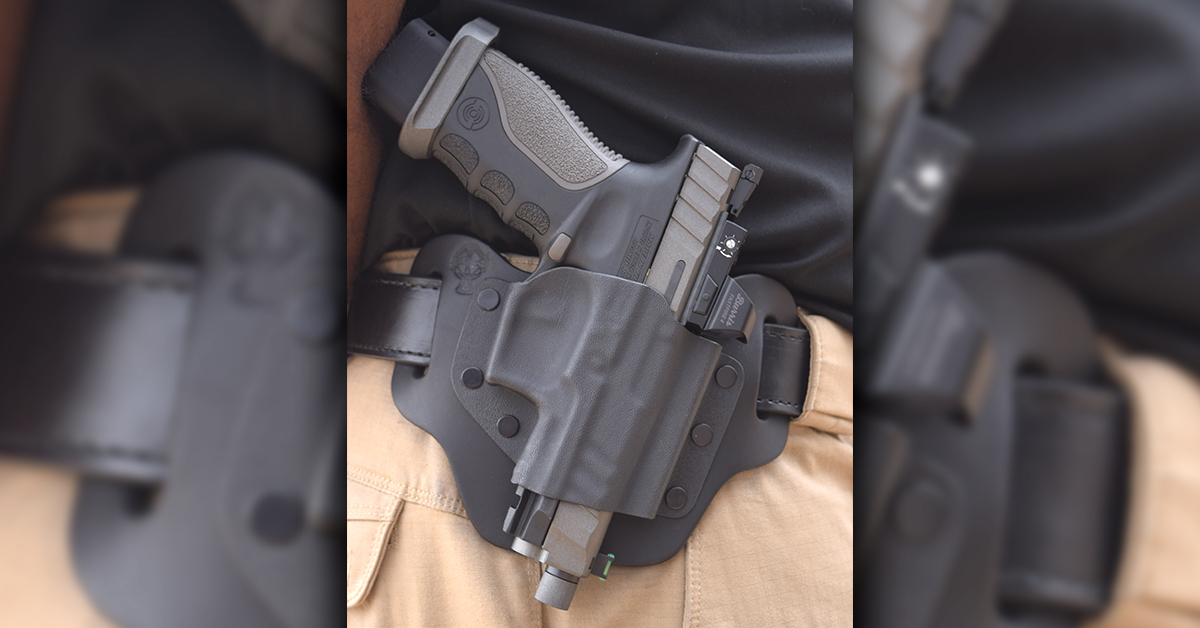
We worked through dry-fire drills to get accustomed to proper presentation and sight acquisition with the red dot, and Gelhaus reinforced that none of the fundamentals of good marksmanship change when you move from open sights to an optic. A clean and efficient presentation, aiming, and a steady, controlled trigger squeeze with good follow-through technique are vital. The biggest point here is that a red dot makes the wobble (sight moving around your point-of-aim) more noticeable than when using open sights. Part of becoming proficient with the red dot is not letting the “enhanced wobble” interfere mentally or inhibit you from executing a good, controlled trigger squeeze.
We also got a good understanding of the need for holdover when shooting a red dot at typical defensive distances (under 15 yards). At close range, the offset between the line of sight (where you place the red dot on the target) and the point-of-impact (where the bullet hits, travelling, theoretically, along the barrel bore axis) can be significant enough to miss key vital zones, particularly head shots. Zeroing the red dot at around 15 yards and becoming used to the holdover (aiming slightly above the intended point-of-impact) needed for close-range engagements are important components for using a red dot on a defensive firearm.
On Day Two, we worked with the STR-9MC Micro Compact. This round of instruction continued to reinforce the fundamentals we’d learned the previous day, but sped things up with “fail drills.” Two shots to the upper chest are what the Gunsite instructors stress to end a dangerous conflict. Sometimes, though, that doesn’t solve the problem (hence the “fail”) and a follow-up shot to the head is required. The instructors emphasized the importance of accuracy in placing the head shot because this is your final effort to stop the threat before it reaches you. Miss here and the attacker is on you.
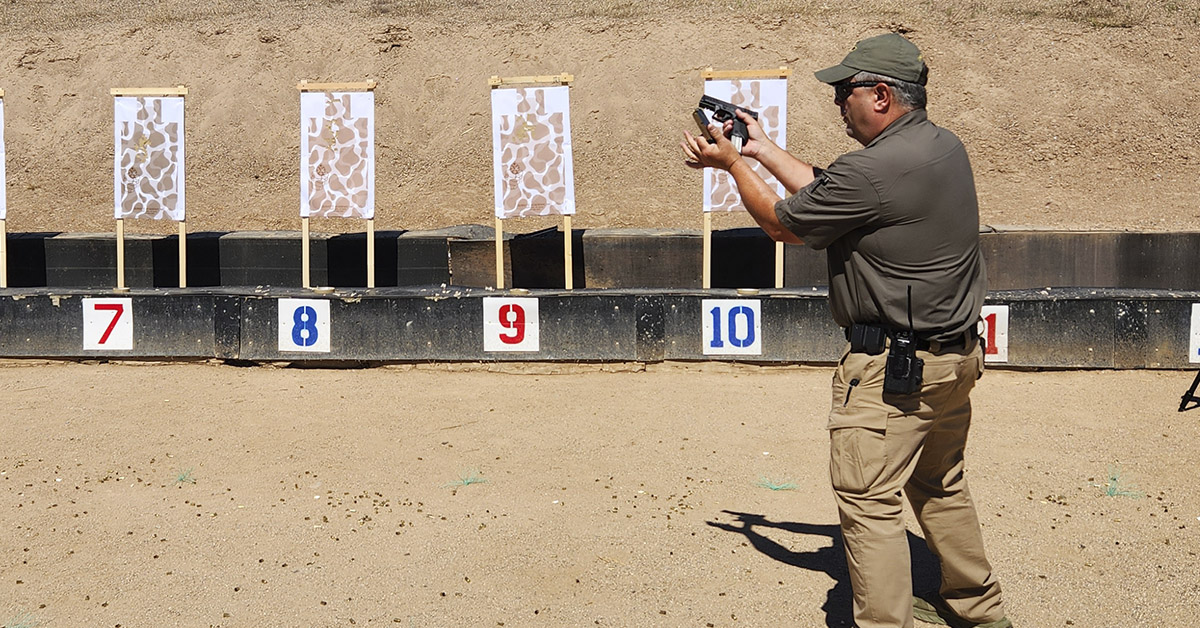
These rapid-fire exercises involved shifting the point of aim quickly and accurately, and in this the STR-9MC shined. And good thing, too, because I usually carry a micro-compact as my EDC gun.
Drawing from the CrossBreed DropSlide, the STR-9MC proved easy to grip and quick to present to the target. Although I usually don’t rely on white dots for aiming, the STR-9MC’s white dot front post facilitated the fast pace of the fail drills. The white dot easily stood out in rear sight’s square notch, allowing for quick and accurate hits to the chest as well as to the small “stop zone” on the head.
My favorite drill for the day was the El Presidente, something developed by Gunsite founder Col. Jeff Cooper. This involves making two shots to the chest on three consecutive targets, performing a speed reload (allowing the magazine to drop and inserting a fresh one), and then engaging the three targets again. This drill brought together all the shooting fundamentals and elements of engagement that we had learned up to this point. It is a great square range practice that will quickly help you identify areas you need to work on.
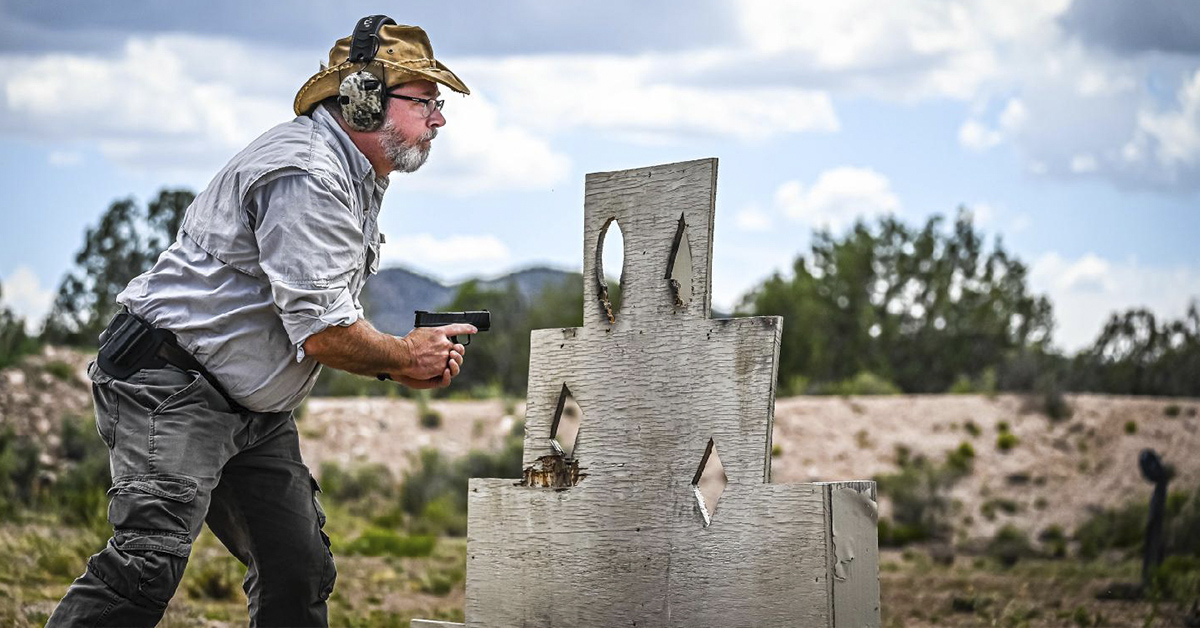
For Day Three, we could use any pistol we wanted. Although I had a blast with the STR-9MC, and probably should have used the red-dot-sporting STR-9S Combat since I really needed work on my red dot skills, I chose the middle-of-the-pack STR-9C Compact because I had yet to shoot it.
One exercise that stood out for me that day and drilled home how I seriously need more scenario training was the shoot house.
The shoot house involved entering a concrete building and working through several rooms and hallways. The objective is to learn how to enter and clear a room safely while identifying and eliminating any threats. I took this exercise seriously and tried to mentally get into the moment. Here, the STR-9C’s aggressive grip that I mentioned earlier came into play. When you’re moving around, opening doors, shifting positions, transitioning between high-ready to low-ready, a reliable grip on your handgun is welcome, and the STR-9C delivered.
Garcia walked me through this course, offering suggestions and asking why I approached a room or opened a door the way I did. The interaction was valuable, but nothing more so than the last question he asked after we did a walk-through and examined the targets.
“How did you aim?” he asked.
Odd question, I thought, but after pondering it for a few seconds the answer dumbfounded me.
“Wow,” I said. “I didn’t!”
“Right. I could see you were looking over the sights.”
It took me a moment to process it, and had Garcia not pointed it out, I would have walked away from the shoot house never realizing I hadn’t aimed at a single target. Yes, all the shots connected, but that was small consolation for the fact that a critical element of shooting was subconsciously tossed aside in the heat of the moment.
I couldn’t believe it.
“It happens a lot,” Garcia said.
Thinking back on that episode, I get it. I tried to make the exercise real. As soon as I identified the target as a threat, it was in my mind to shoot fast before he could shoot me. Thus, I had gone into point-and-shoot mode instead of establishing a proper sight picture.
What an eye-opener. The mental process can be unpredictable when under stress, even though the targets weren’t going to shoot back at me, and I proved it.
Back outside, I relayed my experience to fellow shooter Myloreal Anderson, Training Director for NAAGA (see sidebar below for more info on this organization). Myloreal has trained civilians and law enforcement officers, and he repeated what Garcia had said to me. “It’s very common.”
This underscored the truism that you always revert to your level of training and why it is so important to train realistically. I certainly need more scenario training like this.
All that aside, the STR-9C performed flawlessly, and even with my questionable form, the sure grip and reliable action put holes in my paper opponents.
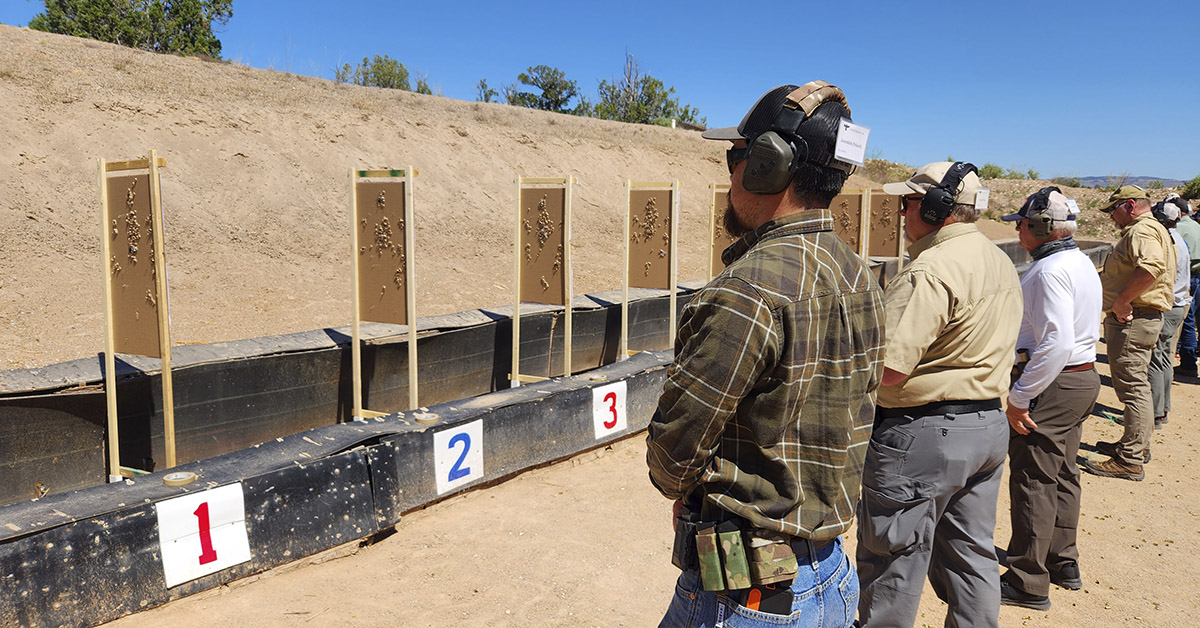
And as it turned out, all the Stoeger STR-9 pistols we shot over this three-day event ran without any hiccups noted. To have 54 guns run by 18 different shooters and going through who knows how many rounds of Fiocchi Range Dynamics 9mm with no malfunctions is high testament to the reliability of the STR-9 platform. The guns ran perfectly right out of the box, their ergonomics worked with shooters of all hand sizes, and the accuracy was right there (proven by a 50-yard steel challenge we engaged in at the end of the second day).
As I mentioned at the start, the performance results of the STR-9 series handguns well exceed that of their budget-conscious price points. If you’re looking for a new EDC or home defense pistol, be sure to check out any of the Stoeger STR-9s at your local dealer.
Stoeger STR-9MC Specifications
- Chamber: 9mm
- Action: striker-fired
- Frame: micro, black polymer
- Slide: nitride-hardened matte black steel
- Barrel Length: 3.29 in.
- Magazine Capacity: 11-round (flush and pinky extended), 13-round (extended)
- Safety: trigger, loaded chamber indicator
- Sights: low-profile adjustable or adjustable tritium
- Optic Ready: available w/tritium sight models, incl. four mounting plates
- Picatinny Rail: 1-slot
- Overall Length: 6.1 in.
- Unloaded Weight: 18.5 oz.
- MSRP: $399 (low-profile adjustable sights); $479 (adjustable night sights)
Stoeger STR-9C
- Chamber: 9mm
- Action: striker-fired
- Frame: compact, black polymer
- Slide: nitride-hardened matte black steel
- Barrel Length: 3.54 in.
- Magazine Capacity: 13- or 10-round
- Safety: trigger
- Sights: quick-read three-dot white or three-dot tritium (optional)
- Optic Ready: available, w/four mounting plates
- Backstrap: M only or S/M/L kit
- Picatinny Rail: 3-slot
- Overall Length: 6.54 in.
- Unloaded Weight: 22.4 oz.
- MSRP: $329 – $449
STR-9S Combat+
- Chamber: 9mm
- Action: striker-fired
- Frame: compact, black polymer
- Slide: Tungsten Cerakote steel
- Barrel Length: 4.67 in.
- Muzzle: threaded w/thread protector
- Magazine Capacity: 20- or 10-round
- Safety: trigger, loaded chamber indicator
- Sights: suppressor-height adjustable fiber-optic
- Optic Ready: available, w/four mounting plates
- Backstrap: S/M/L kit
- Picatinny Rail: 3-slot
- Magazine Well: enhanced, beveled
- Overall Length: 7.94 in.
- Unloaded Weight: 28 oz.
- Accessories: holster, hard case, 3 magazines
- MSRP: $629 – $679
National African American Gun Association
While at Gunsite Academy, I had the pleasure of spending time with two members of the National African American Gun Association—Myloreal Anderson and Shanea Daniels.
NAAGA is a pro-2A organization with a focused mission to provide firearms education and training to the African American community, and welcomes people from all religious, social, and racial perspectives. The association was founded in 2015 with the goal to “expose, educate, and motivate as many African American men and women to go out and purchase a firearm for self-defense and to take training on proper gun use.”
Most states throughout the U.S. have NAAGA chapters where those who are interested in firearms training can seek assistance in their 2A and personal defense journey.
Myloreal, along with Akeithea Bost (NAAGA Training & Development Manager), and Jaron Smith (Training Content Manager) are the driving forces behind NAAGA’s Training Leaders initiative and are responsible for advancing firearm education and training to their members and local communities. With a combined passion for firearms education and training, they have worked tirelessly to bring NAAGA’s top-tier curriculum to all 50 US States.
They have developed and manage an instructors’ portal for certified instructors to access the NAAGA curriculum and to market classes that will benefit the entire firearms community.
For more information, visit the National African American Gun Association. The training team can be reached at [email protected].

